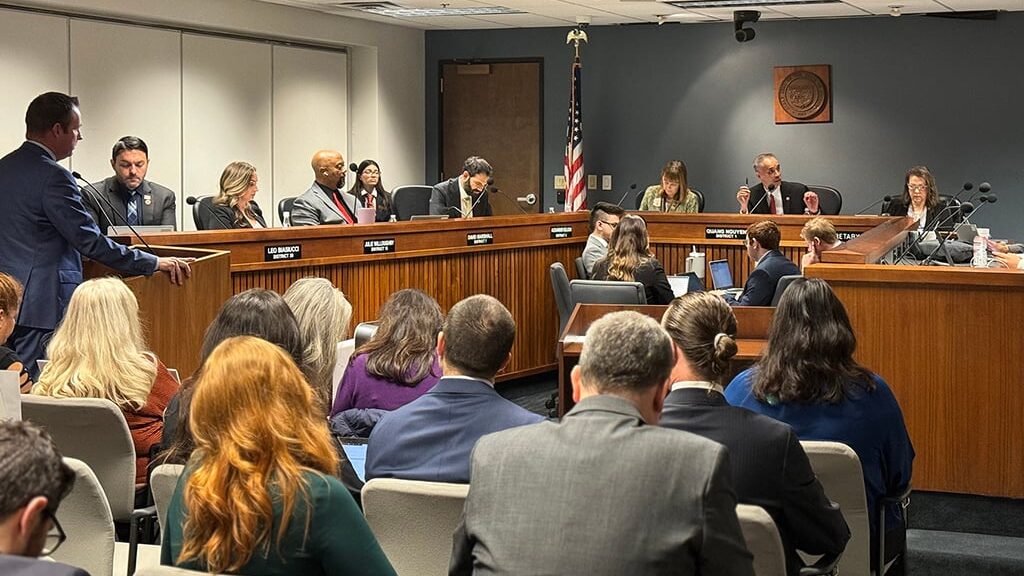Arizona advocates think state health care funds safe for now
Mar 3, 2020, 4:15 AM | Updated: Jun 28, 2021, 9:56 am

(Photo by Alex Proimos/Creative Commons)
(Photo by Alex Proimos/Creative Commons)
WASHINGTON – Arizona health care advocates are confident that President Donald Trump’s plan to slash billions from health services is “dead on arrival” in Congress – but that doesn’t mean they’re not angry at the administration’s direction.
The reductions are included in Trump’s fiscal 2021 budget request released last month, which includes $94.5 billion for the Department of Health and Human Services, a 10% decrease from the current budget.
The White House claims the reductions – officials there do not call them “cuts” – come from cost savings and from rooting out waste, fraud and abuse in government health spending, and will improve health care by making it more efficient.
But advocates and experts say the administration’s proposed reductions are cuts, plain and simple, and they will affect people who need government-funded health care most – children, the poor and the elderly.
“What these proposals really show, regardless of what gets through and what doesn’t get through, they’re reflective of priorities,” said Swapna Reddy, a clinical assistant professor at Arizona State University. “All of this messaging, all of these attempts are … constant incremental attempts to change the safety-net program.”
The proposals are part of an overall budget that would cut nondefense spending by 5% next year, according to the White House. Trump’s plan tightens budgets for food stamps, the Environmental Protection Agency and the Centers for Disease Control and Prevention, among other agencies.
But Office of Management and Budget Acting Director Russ Vought said in a Feb. 10 budget briefing that many of the agencies in line for reductions “will be asked to eliminate waste and inefficient programs.” Vought said specifically that “reducing the cost of healthcare is not a cut.”
“Medicaid will grow more than 3 percent on average, which is much higher than the rate of inflation,” he said, according to a transcript of the briefing. “Only in Washington, D.C., does one look at a budget that grows every year and say it’s a cut.”
Among the proposed savings is a plan to implement work requirements for able-bodied individuals who get Medicaid and food stamps, a move Vought said will “ensure that we are helping to lift able-bodied adults off of a cycle of dependency and onto a ladder of economic opportunity.”
The administration also earmarked $844 billion over the next 10 years for Trump’s “health reform vision,” which includes greater transparency for health service costs, regulatory reform and greater flexibility for states on how they spend Medicaid dollars.
Whatever they are called, those changes could add up to a $785 billion reduction in Medicare and Medicaid funding over the next 10 years, according to the bipartisan Committee for a Responsible Federal Budget. The Center on Budget and Policy Priorities puts the number closer to $1 trillion for the decade.
“We heard in the State of The Union address that Medicaid costs were going down, Medicare costs, prescription drug costs were going down, everything’s fine,” said Rep. Tom O’Halleran, D-Sedona. “And then, less than a week later we have extensive cuts across the entire system.
“That is not a message that things are fine,” O’Halleran said.
Will Humble, executive director of the Arizona Public Health Association, called the planned cuts to Medicaid a “smoke and mirrors” trick.
“It doesn’t give any details of what it’s for, how they expect to accomplish it,” Humble said. “It’s one thing to say we’re going to cut this line item and this is what it does, it’s another to just put a lump-sum cut on a whole broad category but not give any of the particulars.”
Daniel Derksen, a professor of public health at the University of Arizona, said the administration’s proposals are nothing new.
“These are not new proposals, these were things we saw when Speaker (Paul) Ryan was speaker of the House,” said Derksen. “They really proposed to finance very large tax cuts by cutting these mandatory programs in the Medicare and Medicaid.”
The Center on Budget and Policy Priorities said Trump’s budget cuts expansion of Medicaid, federal funds that help states care for low-income adults. Derksen said Arizona’s Medicaid expansion, signed by Gov. Jan Brewer in 2013 as part of Obamacare, has been “probably the single most important thing to stabilize our rural health infrastructure in Arizona over the last 10 years.”
“That expansion of Medicaid really reduced the number of uninsured,” said Derksen, who also direct the Arizona Center for Rural Health and the Area Health Education Centers.
“Prior to the Affordable Care Act we were one of the five worst states as far as percent uninsured,” he said. “Now we’re … just over 10% of Arizonans without health insurance, so we’ve almost halved our uninsured in the state.”
The budget comes as the administration is pushing its Healthy Adult Opportunity initiative, which gives states greater flexibility on Medicaid funds if they agree to a cap on federal funding. Currently there is no limit on Medicaid funds a state can receive.
Reddy said the initiative proposes a “seismic shift in the way that Medicaid would be administered” that would leave states with less money for health coverage. Arizona has not opted in.
But Tara Plese, a spokeswoman for the Arizona Alliance for Community Health Centers, said any cuts to Medicaid would hurt the state’s most vulnerable.
“As we’ve got health care costs rising, housing costs rising, food costs rising, this is the safety net that is really vital to keeping these people in the workforce, it’s keeping them healthy,” Plese said.
But, like Humble, she said the threat is not new.
“We’re always faced with this proposition that our patients are going to lose their coverage,” Plese said. “They’re always looking at ways to cut a very vital safety net program.
“There is a sense of relief that there’s a backstop,” in the form of a Democrat-controlled House, she said.









